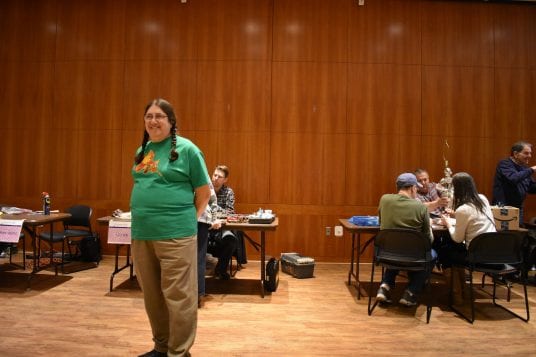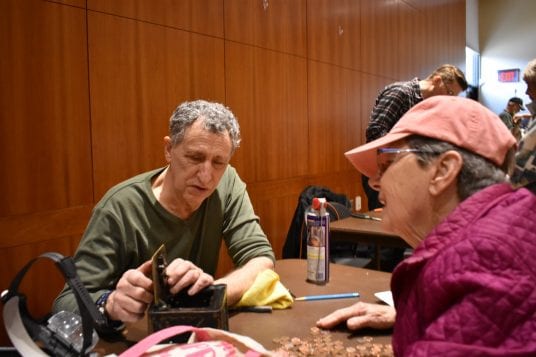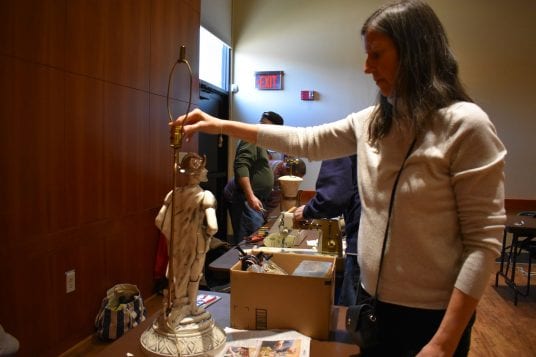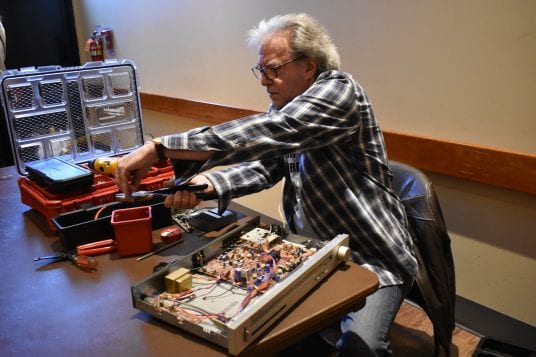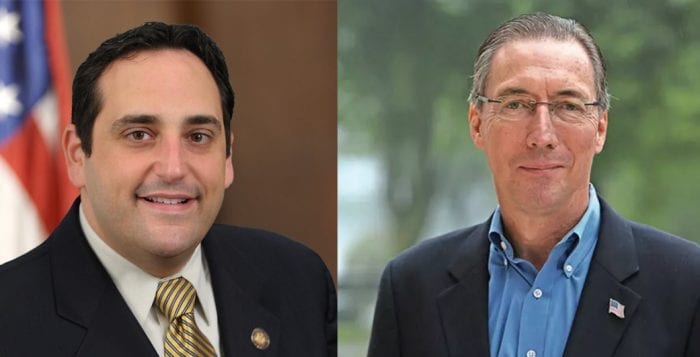About 100 people crowded into the lower level of a Melville office building Feb. 27. All were there to talk about what ends up in the trash bin. Yet, despite the dry subject matter, all knew that garbage will be the talk of Suffolk County and beyond in just a few short years.

The Long Island Regional Planning Council hosted a meeting about what Long Island does with its garbage and, in particular, how the region will dispose of millions of solid waste when the Town of Brookhaven landfill closes in 2024.
The discussion brought together local elected officials, environmentalists, waste management company representatives and the state Department of Environmental Conservation, among others.
Michael White, vice chair of the planning council, outlined the issue to attendees in a presentation.
Currently, the Brookhaven landfill handles over 350,000 tons of ash annually from energy-from-waste facilities, in addition to handling 720,000 tons of solid waste.
“Solid waste management is achieved through a public and private sector partnership,” White said. “Trash is either burned or exported to four energy-from-waste facilities on the island.”
The facilities in Hempstead, Huntington-Smithtown, Babylon and Islip are all operated by Covanta Energy. The Babylon location handles about 50,000 tons of waste.
“The remainder of the residential trash is shipped off on trucks to upstate landfills,” the vice chair of the planning council said.
White said waste from Oyster Bay, the Town of North Hempstead, Riverhead, Southampton and East Hampton get driven off the island.
“We have thousands of tons of waste shipped off Long Island every day, resulting in further stress on our aging and congested highway and bridge infrastructure,” he said. “And this approach is bringing us ever-increasing costs.”
In a panel following the presentation, experts and officials discussed potential solutions and ideas to what was called a “looming crisis.”
“The amount of waste generated on Long Island is increasing,” White said. “With the current volume at the Brookhaven landfill, that means 720,000 tons a year of waste has to find a home somewhere, and another 350,000 tons of ash from the energy from waste facilities will have to find a home somewhere.”
Will Flower, the vice president of regional trash carting company Winters Bros., said statistics show each person produces about 4 1/2 pounds of waste a day. Each day 2,000 trucks transport waste off the island.
An option mentioned was increasing the use of rail cars to transport solid waste. About 6,000 rail cars carry 600,000 tons of waste off the island.
Other attendees and panelists said stakeholders need to come up with more innovative ways to handle waste. Ideas included turning ash into building materials and pulverizing recyclable glass to use in road materials.
“It’s not a looming crisis — It’s now.”
— Ed Romaine
Flower showed a piece of landfill equipment damaged by glass as a result of it being put with other waste, adding that glass can be and should be recycled.
Since China’s 2018 decision to ban the import of most plastics and other materials used by its recycling processors, a number of municipalities have altered programs and in cases have reduced or eliminated recycling. Suffolk County has recently created a Regional Recycling Assessment Task Force in an effort to tackle the issue.
Town of Brookhaven Supervisor Ed Romaine (R) called for a regional effort.
“It’s not a looming crisis — It’s now,” he said. “Either we get together as a region to resolve this and have a path forward, or this is going to be yet another thing that makes Long Island less desirable to live and work.”
The supervisor stressed that the region needs to act to find ways beyond either burning or storing waste in landfills.
“I can’t believe in 2020 that’s the only two ways to deal with waste; we need to do something now before we run out of time,” he said.
Officials from the planning council said they plan on forming a subcommittee to look at the solid waste management crisis and asked attendees to help them develop further recommendations.


